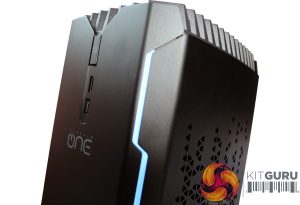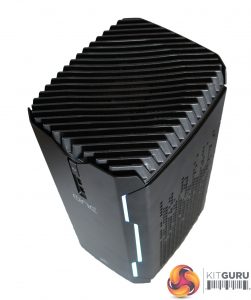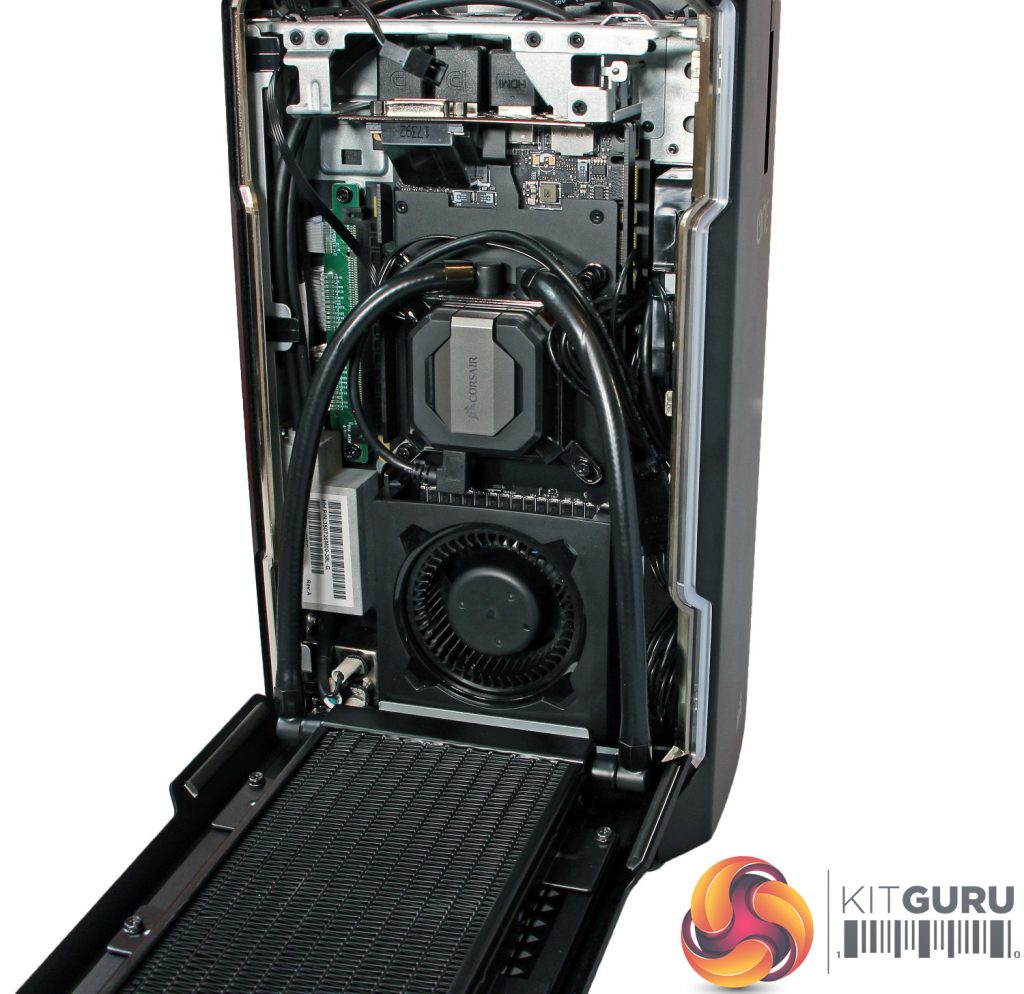The Corsair One’s design hasn’t changed since last year’s model was introduced – and it remains superb.
The machine is built from aircraft-grade aluminium that has a matte black finish which doesn’t pick up fingerprints easily, and the front panel is decorated with a couple of LED strips on either side of the subtle power button and Corsair logo.
It looks the part – easily at home in a gaming den or in an office – and it’s seriously small. The Corsair is just 380mm tall and 176mm wide, and it weighs 7.4kg.
That compares well to almost everything else out there. It’s far smaller than mid- and full-sized towers, and it occupies less desk space than the MSI Trident 3, which is narrower but deeper. The only machine we’ve seen come close is the Armari Magnetar V25R-RA750G2, which is half as wide and shorter while including comparable components.
The top of the rig is decorated with thick metal slats – but they’re not just for show. They also form a key part of the Corsair’s thermal system. The slats sit above a 140mm ML-series fan that spins with almost no friction, and the top can be removed by pushing a discreet button at the back.
Removing the slatted section reveals the rest of Corsair’s ingenious design. The motherboard and graphics card sit vertically on either side of a sturdy metal skeleton, joined by a PCI riser card.
The two larger side panels contain slimline, custom-made water-cooling radiators that snake towards the Corsair’s two key components. The processor sits on top of a mini-ITX motherboard, while the graphics card uses a similar waterblock and has a secondary 90mm fan to chill its memory chips.
Neither of the slim water-cooling units has a fan of its own, and heat is ejected through patterned vents on either side of the machine.
A close-up examination of the Corsair reveals several neat design touches. The power supply and graphics card outputs point upwards, towards the metal slats, and extension cables are used to route them to more useful spots on the Corsair’s rear. The hard disk sits inside a neat metal caddy, and the rear IO is recessed to save a little more space.
The Corsair remains brilliant – we’ve never seen so much high-end hardware crammed inside such a small space – but it does have the same old issues.
The modular PSU snakes cables over every spare inch of this machine, which is no surprise, but it does mean that component access is difficult. Every major part of this system can be accessed, but it’s never going to be easy. There’s no room to grow, either, and there are no dust filters on this system’s various vents.
Of course, if you’re serious about having a PC for tinkering, a niche and specially-designed rig like the Corsair is not a worthwhile option. If that’s the case, then a full-sized tower will offer loads more versatility, and even a conventional mini-ITX machine will have more space to play with.
For most people, though, the Corsair’s design remains sensational. It’s smaller than most of its rivals, it looks better, and its build quality is beyond reproach.
Be sure to check out our sponsors store EKWB here
 KitGuru KitGuru.net – Tech News | Hardware News | Hardware Reviews | IOS | Mobile | Gaming | Graphics Cards
KitGuru KitGuru.net – Tech News | Hardware News | Hardware Reviews | IOS | Mobile | Gaming | Graphics Cards





